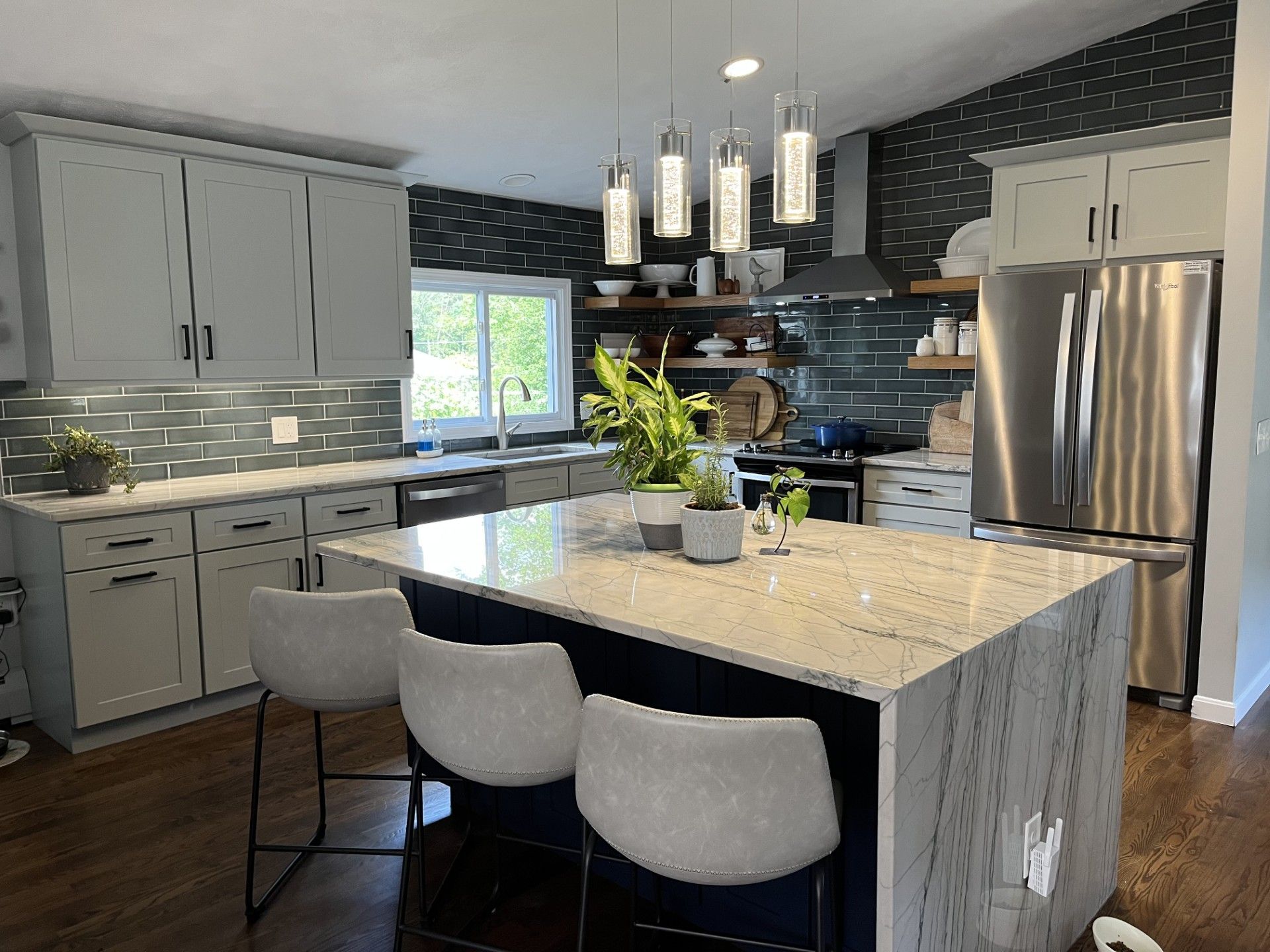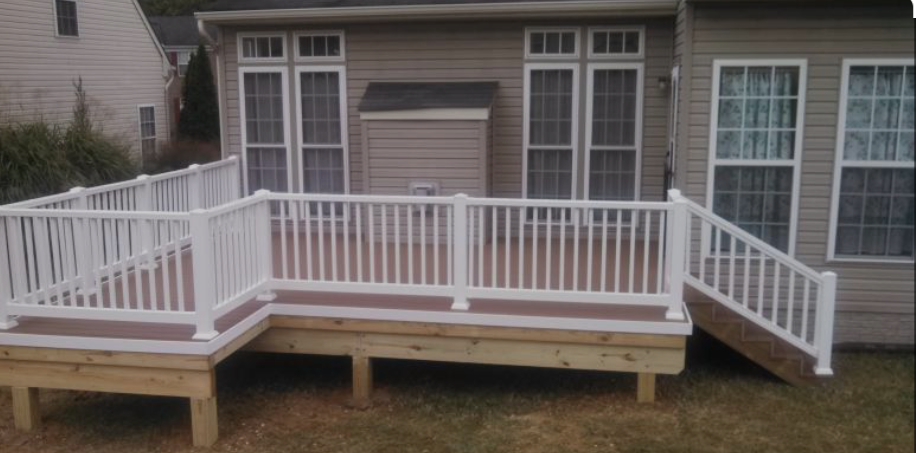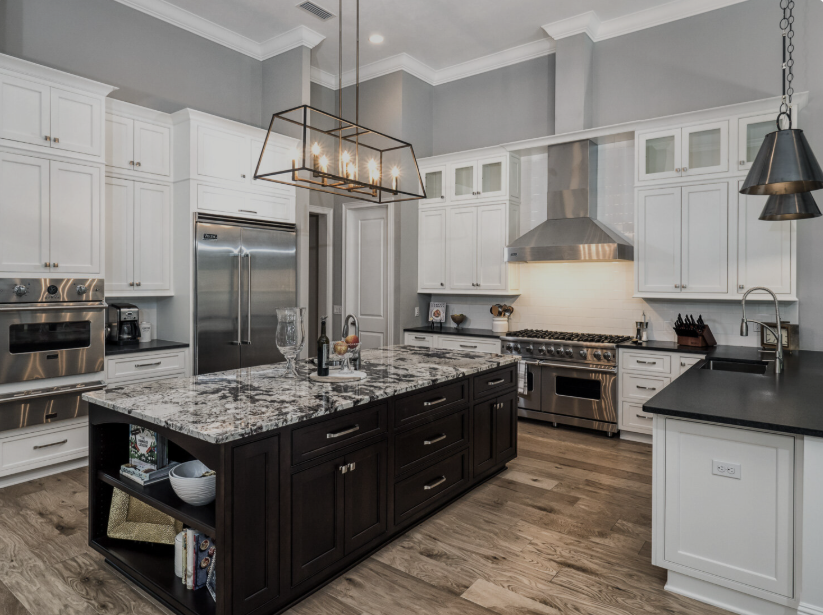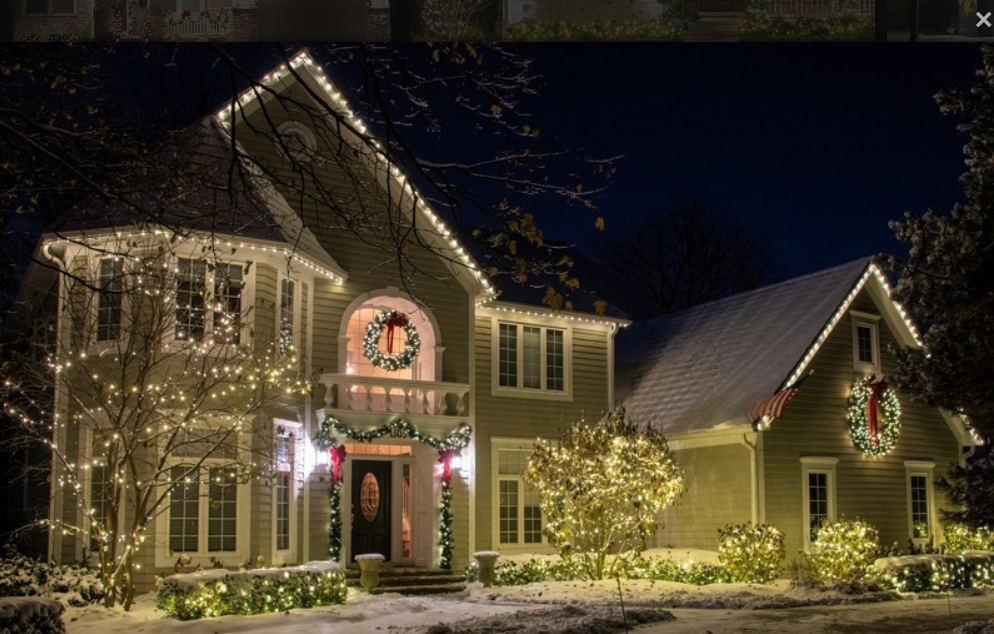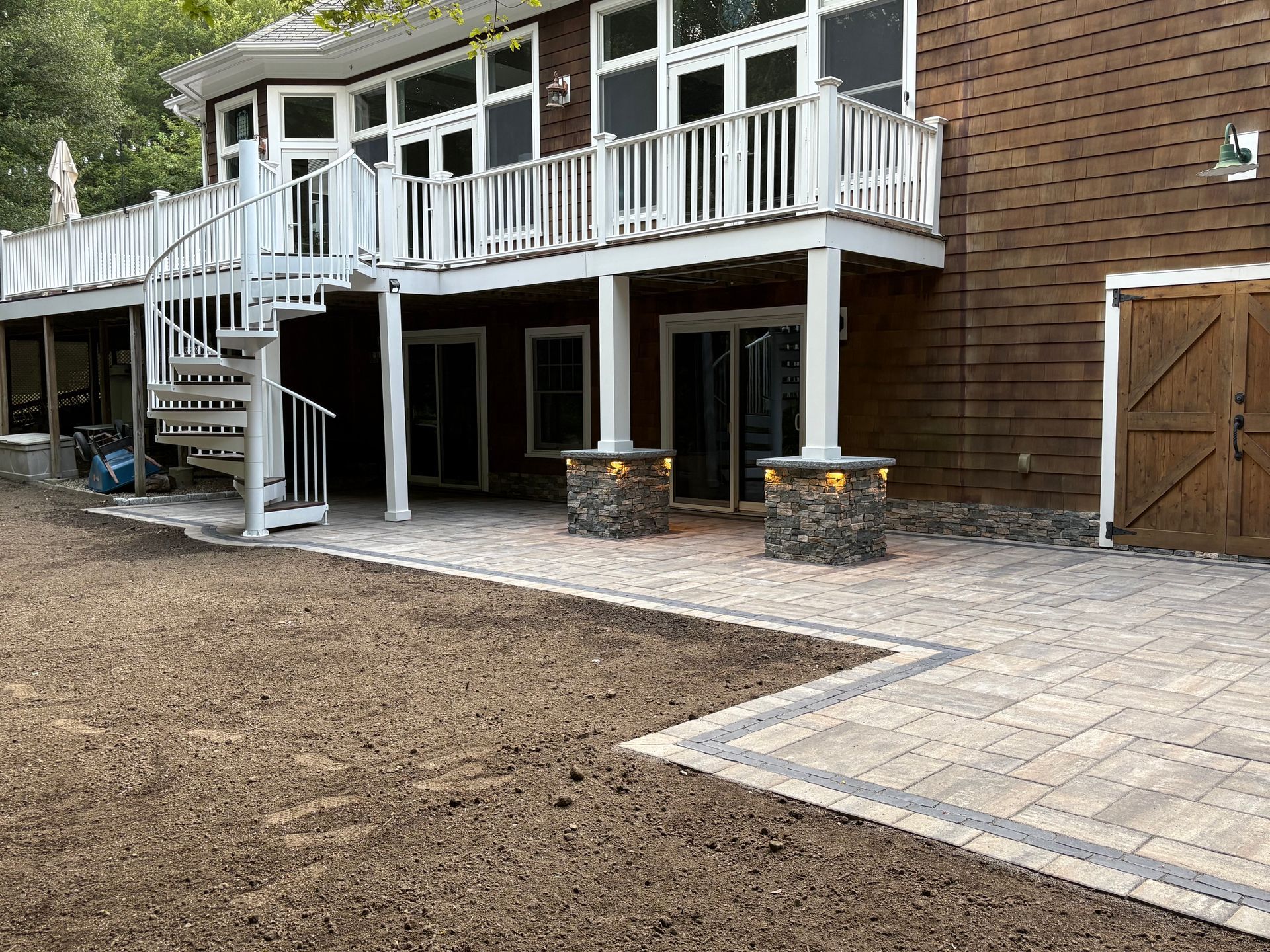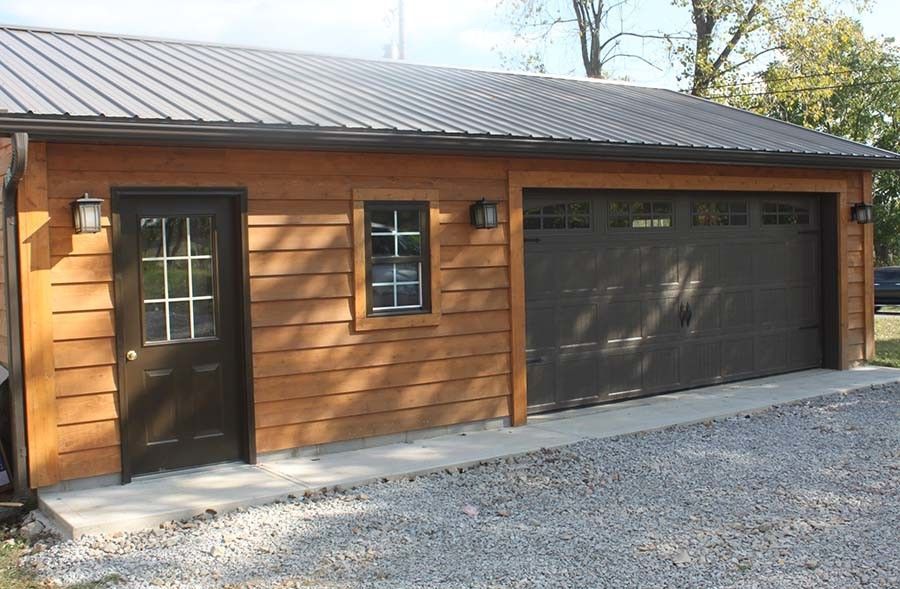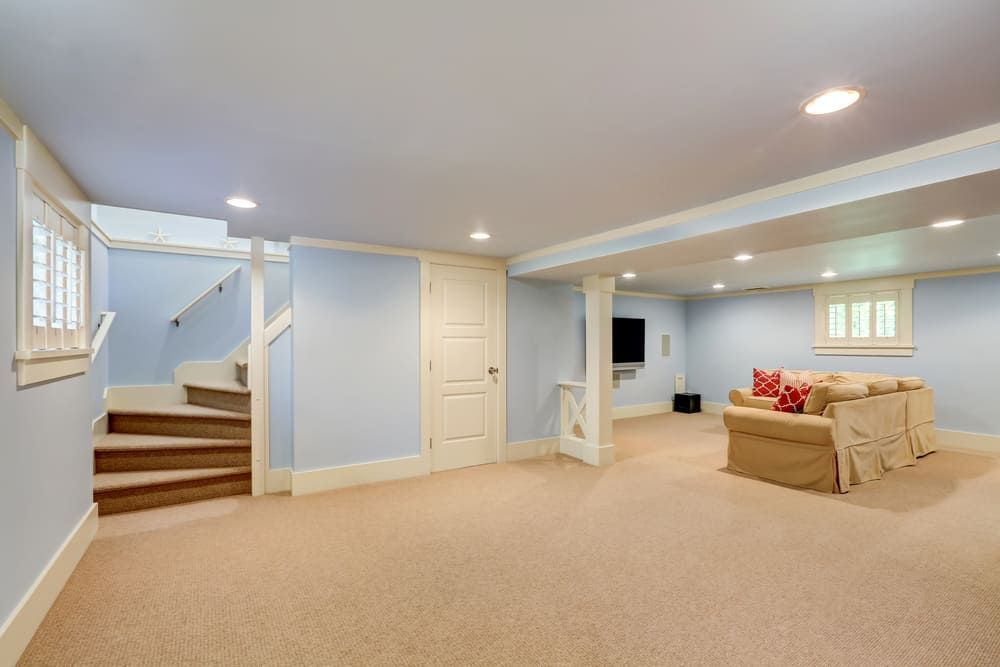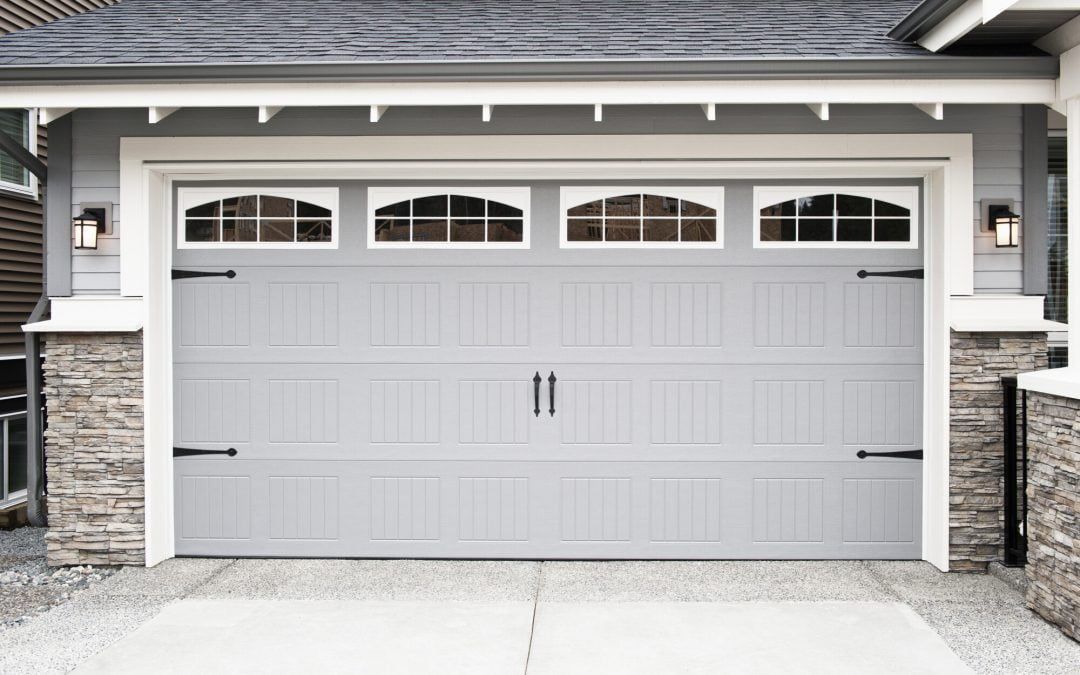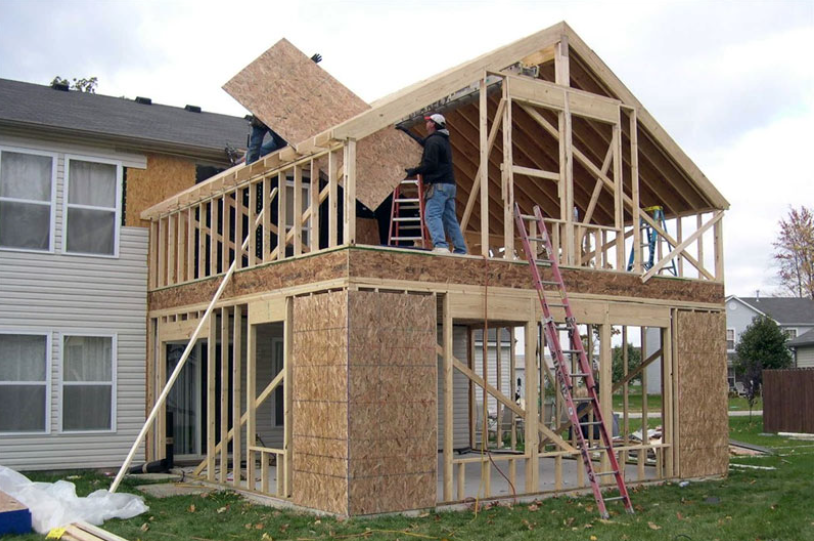Coastal Home Additions in Rhode Island
Building a home addition on Rhode Island's coastline requires specialized knowledge, careful planning, and strict adherence to coastal building regulations. Whether you're expanding your Narragansett beach house, adding space to your Newport waterfront property, or upgrading your Barrington coastal home, understanding Rhode Island's unique coastal construction requirements is essential for a successful project.
What Makes Coastal Home Additions in Rhode Island Different?
Coastal home additions in Rhode Island face unique challenges that inland properties don't encounter. The Ocean State's 400 miles of coastline exposes homes to salt air, high winds, storm surge, flooding, and the strictest building codes in the region.
Rhode Island coastal additions must withstand hurricane-force winds, resist flood damage, prevent saltwater corrosion, and comply with the Rhode Island Coastal Resources Management Council (CRMC) regulations - all while maintaining the character of Rhode Island's cherished coastal communities.
Rhode Island Coastal Zone Regulations and Permits
CRMC Jurisdiction and Requirements
The Rhode Island Coastal Resources Management Council (CRMC) regulates all development within 200 feet of coastal features including beaches, dunes, bluffs, rocky shores, salt marshes, and coastal ponds.
CRMC Assent Required for:
- Any addition within 200 feet of coastal waters
- Structures in velocity flood zones (V zones)
- Construction on coastal properties in Special Area Management Plans (SAMPs)
- Additions that increase impervious surface area
- Projects affecting coastal buffers or setbacks
CRMC Review Process:
- Application submission with detailed site plans
- Environmental assessment
- Public notice period (for major projects)
- Review period typically 60-90 days
- Possible modifications or conditions
Local Building Permits in Coastal Rhode Island Communities
After obtaining CRMC approval, you'll need local building permits from your municipality:
Narragansett: Strict coastal building standards with elevated construction requirements. Building department coordinates with CRMC on coastal projects.
Newport: Historic district considerations plus coastal regulations. Newport's preservation standards add another layer of approval for visible additions.
Jamestown: Small-town review process with emphasis on protecting island character and coastal resources.
Little Compton: Rural coastal community with strict setback requirements and environmental protections.
Westerly (Watch Hill, Weekapaug, Misquamicut): High-value coastal properties with rigorous building standards and community association rules.
Middletown: Coastal and historic considerations similar to Newport, with slightly streamlined processes.
South Kingstown (Matunuck, Green Hill, East Matunuck): Active coastal erosion areas requiring engineering studies and elevated construction.
Barrington and Bristol: Narragansett Bay locations with moderate coastal exposure requiring wind and flood protections.
Tiverton: Sakonnet River and Mount Hope Bay coastline with unique tidal considerations.
FEMA Flood Zone Requirements
Most Rhode Island coastal properties sit in FEMA flood zones requiring specific construction standards:
V Zones (Velocity Zones): High-risk coastal areas with wave action
- Elevated construction on pilings or columns
- No enclosed space below Base Flood Elevation (BFE)
- Breakaway walls for enclosed areas
- Enhanced anchoring and wind resistance
A Zones (Special Flood Hazard Areas): Moderate flood risk
- Elevated first floor above BFE
- Flood vents in foundation walls
- Flood-resistant materials below BFE
X Zones: Minimal flood risk but still coastal exposure concerns
Check your property's flood zone at FEMA's Flood Map Service Center. Your flood zone determines construction requirements and flood insurance premiums.
Coastal Building Code Requirements for Rhode Island Additions
Wind Resistance Standards
Rhode Island coastal additions must resist hurricane-force winds. The state uses the International Residential Code (IRC) with Rhode Island amendments specifying:
Wind Speed Requirements:
- Coastal Rhode Island: 130 mph wind speeds (3-second gust)
- Exposure Category D (waterfront): Highest wind loads
- Enhanced fastening schedules for roof and wall sheathing
- Hurricane ties and structural anchoring
Roof Requirements:
- Impact-resistant shingles rated for high winds
- Enhanced underlayment and ice dam protection
- Proper ventilation to prevent moisture in salt air climate
- Metal roofing increasingly popular for longevity
Flood-Resistant Construction
Elevated Foundations:
- Pilings driven to bedrock or adequate depth
- Concrete columns with proper reinforcement
- Elevated utilities above BFE
- Flood vents (minimum 1 square inch per square foot of enclosed area)
Flood-Resistant Materials:
- Pressure-treated or naturally rot-resistant lumber
- Concrete and masonry below flood elevation
- Closed-cell spray foam insulation
- Ceramic tile, marine-grade plywood, and sealed concrete floors
Saltwater Corrosion Protection
Rhode Island's salt air accelerates material deterioration. Coastal additions require:
Corrosion-Resistant Fasteners:
- Stainless steel or hot-dipped galvanized hardware
- Non-corrosive flashing materials
- Aluminum or vinyl windows and doors
- Marine-grade sealants and caulking
Protective Coatings:
- Exterior-grade primers and paints
- Regular maintenance schedules
- Treated wood products rated for coastal exposure
- Weather barriers and housewrap designed for high-humidity environments
Popular Coastal Addition Types in Rhode Island
Second-Story Additions
Adding a second story to Rhode Island coastal homes offers spectacular ocean views while avoiding coastal setback restrictions.
Advantages:
- No additional footprint (often no CRMC review needed)
- Ocean and bay views from elevated vantage point
- No loss of yard space
- Often simpler permitting than horizontal additions
Considerations:
- Existing foundation must support additional weight
- Enhanced wind load requirements at elevation
- Access to construction more challenging
- Temporary housing may be needed during construction
Popular Locations: Narragansett, Newport, Middletown, Watch Hill
Cost Range: $200-$400 per square foot for Rhode Island coastal second stories
Master Suite Additions
Luxury master suites are the most requested coastal addition in Rhode Island's high-end beach communities.
Typical Features:
- Spacious bedroom with ocean views
- Spa-like bathroom with soaking tub and walk-in shower
- Private deck or balcony
- Walk-in closet
- Coffee bar or kitchenette
Design Considerations:
- Large windows to capture views while resisting wind loads
- Premium finishes that withstand humidity
- Outdoor shower for beach access
- Heating and cooling for year-round comfort
Popular in: Newport, Barrington, Bristol, Watch Hill, Little Compton
Cost Range: $150,000-$400,000 depending on size and finishes
Sunroom and Four-Season Room Additions
Rhode Island's coastal climate makes sunrooms and enclosed porches extremely popular.
Three-Season Rooms:
- Screened porches with removable windows
- Use from May through October
- Lower construction costs
- Still require coastal building standards
Four-Season Rooms:
- Fully insulated and climate-controlled
- Impact-resistant windows rated for coastal winds
- Radiant floor heating popular for winter use
- Seamless indoor-outdoor living
Cost Range: $150-$400 per square foot
Kitchen Expansions
Modern open-concept kitchens require space many Rhode Island coastal cottages lack.
Common Kitchen Addition Features:
- Expanded cooking and prep areas
- Large islands for entertaining
- Dining space with water views
- High-end appliances and finishes
- Butler's pantry or mudroom connection
Coastal Kitchen Considerations:
- Marine-grade cabinetry resistant to humidity
- Dehumidification systems
- Durable flooring (porcelain tile, sealed hardwood)
- Adequate ventilation for salt air
Cost Range: $175-$500 per square foot for Rhode Island coastal kitchens
Garage and Carport Additions
Rhode Island's coastal weather makes covered parking valuable for protecting vehicles from salt air.
Detached Garages:
- Often easier to permit than attached additions
- Can include second-floor bonus room or studio
- Must meet setback and CRMC requirements
- Elevated construction in flood zones
Attached Garages:
- Direct home access (valuable in Rhode Island winters)
- More complex permitting near coast
- Must match home's elevated construction
Cost Range: $35,000-$100,000 for basic garage; $100,000-$250,000 with living space above
Design Considerations for Rhode Island Coastal Additions
Architectural Styles for Coastal Rhode Island
Your addition should complement Rhode Island's coastal architectural heritage:
New England Coastal Cottage:
- Shingle-style siding (cedar or fiber cement)
- White trim and accents
- Gabled or hipped roofs
- Large windows for natural light
- Covered porches and outdoor living spaces
Newport Colonial and Victorian:
- Historic detailing and proportions
- Preservation Commission approval required
- Period-appropriate materials and colors
- Maintaining historic character while adding modern comfort
Modern Coastal Contemporary:
- Clean lines and minimalist aesthetic
- Floor-to-ceiling windows
- Flat or low-slope roofs with proper drainage
- Mixed materials (wood, metal, glass, stone)
- Popular in new development areas
Maximizing Ocean Views
Rhode Island coastal additions should capture water views without compromising storm protection:
Window Placement:
- Impact-resistant glass required in high-wind zones
- Large windows on water-facing sides
- Smaller, strategically placed windows on storm-facing elevations
- Hurricane shutters or impact glass
Deck and Patio Integration:
- Outdoor living spaces extend usable area
- Composite or PVC decking resists rot and salt damage
- Stainless steel or aluminum railings
- Covered areas for sun and rain protection
Roof Decks:
- Spectacular views from elevated platforms
- Require enhanced waterproofing
- Must meet strict wind load requirements
- Popular on flat or low-slope roofs
Climate Control in Coastal Rhode Island Additions
Rhode Island's coastal climate brings humidity, salt air, and temperature extremes.
Heating and Cooling:
- Mini-split heat pumps ideal for additions (no ductwork needed)
- Zone control for efficient heating/cooling
- Dehumidification essential year-round
- Radiant floor heating luxurious for cold months
Insulation and Air Sealing:
- Minimum R-21 wall insulation
- R-49 attic insulation
- Closed-cell spray foam prevents moisture infiltration
- Proper ventilation prevents condensation
- Air sealing critical in salt air environments
Moisture Management:
- Dehumidifiers maintain 40-50% relative humidity
- Bathroom fans vented to exterior
- Kitchen exhaust hoods
- Proper drainage around foundation
Timeline for Coastal Home Additions in Rhode Island
Building on Rhode Island's coast takes longer than inland projects due to additional permitting and weather considerations.
Permitting Phase: 3-6 months
- CRMC application and review: 60-90 days
- Local building permits: 4-8 weeks
- Historic district approval (if applicable): 30-60 days
- Engineering and architectural plans: 4-8 weeks
Construction Phase: 6-12 months
- Foundation and structural work: 6-12 weeks
- Framing and exterior: 8-12 weeks
- Windows, doors, roofing: 4-6 weeks
- Interior work (electrical, plumbing, HVAC): 6-8 weeks
- Finishing (drywall, flooring, trim, paint): 8-12 weeks
- Final inspections: 2-4 weeks
Weather Delays:
- Winter weather can pause exterior work for weeks
- Nor'easters and tropical storms cause delays
- High winds prevent roof and exterior work
- Best construction period: April through November
Total Timeline: 12-18 months from initial design to completion
Cost of Coastal Home Additions in Rhode Island
Coastal construction costs 20-40% more than inland building due to specialized materials, enhanced structural requirements, and complex permitting.
Cost Factors:
- Elevated construction and pile foundations
- Impact-resistant windows and doors
- Corrosion-resistant materials and fasteners
- Enhanced wind and flood protections
- CRMC and environmental compliance
- Limited construction season
- Transportation to island communities
Rhode Island Coastal Addition Cost Ranges:
- Basic addition (bedroom, bathroom): $175-$300 per square foot
- Mid-range addition (kitchen, master suite): $250-$400 per square foot
- Luxury addition (high-end finishes, views): $400-$600+ per square foot
Example Project Costs:
- 300 sq ft sunroom: $60,000-$120,000
- 500 sq ft master suite: $125,000-$200,000
- 800 sq ft second-story addition: $160,000-$320,000
- 1,200 sq ft major addition: $300,000-$600,000+
These costs include design, permitting, construction, and finishes. Site-specific factors like soil conditions, coastal erosion, and access can significantly impact costs.
Benefits of Coastal Home Additions in Rhode Island
Increased Property Value
Rhode Island coastal real estate is among the most valuable in New England. Well-designed additions provide excellent returns:
- Quality additions return 60-90% of construction costs at resale
- Additional bedrooms and bathrooms significantly increase value
- Ocean view spaces command premium prices
- Modern, updated homes sell faster in competitive coastal markets
Enhanced Lifestyle
Rhode Island coastal living is about embracing the ocean lifestyle:
- More space for family gatherings and entertaining
- Better views of Narragansett Bay, Atlantic Ocean, or coastal ponds
- Modern amenities in cherished family homes
- Year-round comfort in four-season additions
- Rental income potential in summer vacation markets
Preserving Coastal Properties
Many Rhode Island coastal homes are family properties passed through generations. Additions allow families to:
- Modernize without losing property character
- Accommodate multigenerational living
- Update to current building codes and safety standards
- Maintain family legacy in increasingly expensive coastal markets
Rhode Island Coastal Addition Challenges and Solutions
Coastal Erosion
Rhode Island faces significant coastal erosion, particularly in South County beaches.
Solutions:
- Engineering studies assess erosion rates
- Proper setbacks from coastal features
- Seawalls and revetments where permitted
- Flood insurance for protected investment
- Consider long-term erosion in design decisions
High Water Tables
Many Rhode Island coastal areas have high groundwater levels.
Solutions:
- Elevated construction on pilings
- Proper foundation drainage
- Sump pumps in below-grade spaces
- Waterproofing and moisture barriers
Neighbor and Community Considerations
Rhode Island's coastal communities are tight-knit with strong opinions about development.
Best Practices:
- Communicate with neighbors early
- Respect community character and scale
- Follow local design guidelines
- Attend zoning and planning board meetings prepared
- Hire experienced local contractors who understand community expectations
Access and Logistics
Some Rhode Island coastal properties have limited construction access.
Solutions:
- Schedule material deliveries during off-peak hours
- Use smaller equipment when necessary
- Coordinate with local authorities for road access
- Plan for longer construction timelines
- Consider barge delivery for waterfront properties
Choosing a Rhode Island Coastal Construction Contractor
Coastal additions require specialized expertise. Your contractor should have:
Essential Qualifications:
- Rhode Island contractor's license (verify at contractor.ri.gov)
- Extensive coastal construction experience
- CRMC permitting knowledge
- Portfolio of completed coastal projects in Rhode Island
- Engineers and architects experienced in coastal design
- Understanding of flood zone construction
- Relationships with local building officials
Questions to Ask:
- How many coastal additions have you built in Rhode Island?
- Are you familiar with CRMC regulations?
- Do you have in-house engineering or work with coastal engineers?
- What's your experience with my specific flood zone?
- Can you provide references from coastal Rhode Island homeowners?
- How do you handle weather delays and seasonal construction challenges?
- What warranties do you offer on coastal construction?
Red Flags:
- No coastal construction experience
- Unwillingness to discuss CRMC process
- Significantly lower bids than competitors (cutting corners on coastal requirements)
- No local references
- Pressure to start before permits are secured
Rhode Island Coastal Communities: Local Considerations
Narragansett
Home to some of Rhode Island's most beautiful beaches including Scarborough, Narragansett Town Beach, and Roger Wheeler.
Addition Considerations:
- Active erosion areas require engineering studies
- CRMC heavily involved in beachfront projects
- Strong community identity favoring coastal cottage style
- Excellent rental market for investment-minded additions
Newport
Historic oceanfront estates and modest coastal cottages coexist in America's sailing capital.
Addition Considerations:
- Historic district regulations extremely strict
- Preservation Commission approval required
- High property values justify premium construction
- Architectural styles must match historic character
- Competitive construction market with skilled craftsmen
Watch Hill (Westerly)
One of New England's most exclusive beach communities.
Addition Considerations:
- Ultra-high-end construction standards
- Community association rules in many areas
- Premium materials and finishes expected
- Strict design guidelines
- Limited construction windows in summer season
Block Island
Unique island location with special construction challenges.
Addition Considerations:
- All materials barged to island (significant cost impact)
- Limited contractor availability
- Strict land trust and conservation restrictions
- National Historic Landmark status in some areas
- Weather-dependent construction schedules
Barrington and Bristol
Narragansett Bay coastline with somewhat less exposure than ocean-facing properties.
Addition Considerations:
- Moderate coastal building requirements
- Active sailing and boating communities
- Mix of year-round and seasonal properties
- Good contractor availability
- More moderate costs than ocean-facing locations
Protecting Your Investment: Insurance and Maintenance
Flood Insurance
Required for mortgaged properties in flood zones, strongly recommended for all coastal Rhode Island homes.
Coverage Considerations:
- National Flood Insurance Program (NFIP) provides base coverage
- Private flood insurance often offers better coverage and pricing
- Elevated construction reduces premiums significantly
- Contents coverage separate from building coverage
- Increased Cost of Compliance coverage for post-disaster rebuilding
Homeowner's Insurance
Standard policies exclude flood but cover wind damage from hurricanes and nor'easters.
Coastal Considerations:
- Higher premiums for coastal properties
- Wind/hail deductibles often 1-5% of dwelling value
- Replacement cost coverage essential
- Regular updates as addition increases home value
Maintenance Requirements
Coastal Rhode Island homes require more maintenance than inland properties.
Annual Maintenance:
- Pressure wash siding to remove salt and mildew
- Inspect and clean gutters and downspouts
- Check caulking and sealants around windows and doors
- Inspect roof for damaged or missing shingles
- Lubricate door and window hardware
- Test and maintain dehumidification systems
Every 3-5 Years:
- Repaint or restain exterior surfaces
- Inspect and maintain deck surfaces and railings
- Check foundation pilings and structural connections
- Service HVAC systems
- Inspect and repair chimney and flashing
Every 10 Years:
- Replace windows and doors as needed
- Consider roof replacement (coastal exposure reduces lifespan)
- Repaint interior in high-humidity areas
- Update aging systems (electrical, plumbing)
Frequently Asked Questions
How close to the water can I build an addition in Rhode Island?
CRMC regulates construction within 200 feet of coastal features. Minimum setbacks vary by location but typically range from 50-150 feet from coastal resources. Your specific property's setback depends on erosion rates, coastal feature type, and local regulations.
Do I need CRMC approval for all coastal additions in Rhode Island?
If your property is within 200 feet of the coast (most coastal homes), yes. Some minor additions may qualify for CRMC exemptions, but always check before proceeding. Violations carry significant penalties.
How much does CRMC approval add to my project timeline?
CRMC review takes 60-90 days for standard applications, longer for complex projects requiring public hearings. Plan for 3-6 months for full permitting including CRMC and local approvals.
Can I enclose my existing coastal Rhode Island deck or porch?
Possibly, but this requires full permitting including CRMC approval. Enclosed space must meet current building codes for wind resistance, flood elevation, and energy efficiency. Many Rhode Island coastal porches cannot be enclosed due to flood zone restrictions.
What's the difference between building on Narragansett Bay vs. the Atlantic Ocean?
Ocean-facing properties experience higher wind loads, more severe storm surge, and greater salt exposure. Bay properties have somewhat less exposure but still face significant coastal building requirements. Ocean properties typically face stricter CRMC review.
How do I find out my property's flood zone?
Visit FEMA's Flood Map Service Center online or contact your local building department. Your property deed may also reference the flood zone. Understanding your flood zone is essential before planning any coastal addition.
Are there grants or incentives for coastal construction in Rhode Island?
While few incentives exist for additions, Rhode Island Energy offers rebates for energy-efficient heating, cooling, and insulation that can reduce costs by thousands. Some municipalities offer property tax incentives for wind-resistant improvements.
Planning Your Coastal Rhode Island Addition
A successful coastal home addition in Rhode Island requires patience, proper planning, and the right construction partner. From understanding CRMC regulations to selecting corrosion-resistant materials, every decision impacts your project's success and longevity.
Rhode Island's coastal properties are special places deserving thoughtful, well-executed improvements. With proper design, quality construction, and attention to coastal building requirements, your addition will provide decades of enjoyment while protecting your investment in Rhode Island's competitive coastal real estate market.
Ready to expand your Rhode Island coastal home?
Rockhouse Construction specializes in coastal home additions throughout Rhode Island's shoreline communities. Our experienced team understands CRMC regulations, flood zone construction requirements, and the unique challenges of building in Rhode Island's coastal environment. From Narragansett to Newport, Watch Hill to Barrington, we've successfully completed coastal additions that blend beautiful design with the durability required for oceanfront living.
Contact us today for a free consultation and discover how we can transform your coastal property with an addition built to withstand Rhode Island's coastal conditions for generations.
